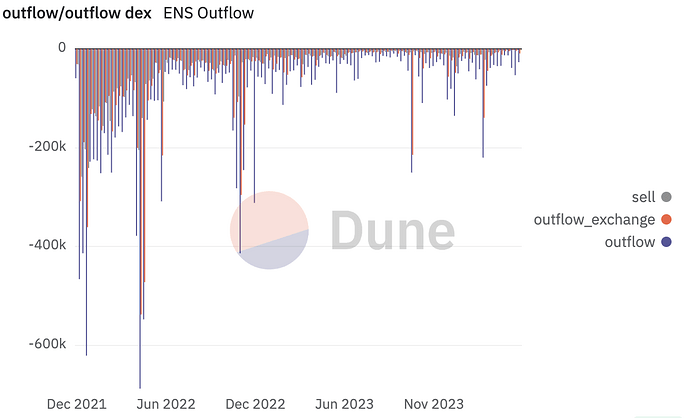Assuming that stakers are rewarded in both the VE and LST case, why do you feel there’s more of a direct link and greater alignment in LST vs VE?
Assuming rewards are the same again, why would LST provide more targeted incentivization than VE?
The LST model creates a stronger direct link and greater alignment compared to the VE model because it aligns the interests of token holders with the long-term success of the DAO while providing increased liquidity and flexibility.
In the LST model, token holders can earn staking rewards while maintaining the ability to use their tokens in other DeFi applications, creating multiple income streams. This increased utility makes LST tokens more valuable, incentivizing holders to actively participate in governance to ensure the continued success and growth of the platform. Crucially, because the LST token has a revenue stream, holders are motivated to treat it as a productive asset and work to drive yield up. In contrast, in the VE model, the locked tokens may incentivize holders to extract value from the DAO rather than contribute to its long-term success.
Moreover, the real-time rewards in the LST model serve as a direct feedback mechanism for token holders to gauge the effectiveness of the DAO’s governance and management. If the rewards increase, it indicates that the DAO is making sound decisions, encouraging holders to support the current governance structure. Conversely, if rewards decrease, it signals that changes may be needed, prompting holders to reassess their delegate choices and push for improvements. This feedback loop is less apparent in the VE model, where the results of mismanagement may not be immediately reflected, making it difficult for token holders to judge performance and react to poor management.
The VE model’s token lockup can also trap disenchanted participants and deter new entrants, potentially leading to a stagnant governance system. The lack of flexibility in the VE model can lead to a misalignment of interests, as holders may feel stuck with their delegate choices and have limited recourse to address underperformance.
In contrast, the LST model provides the flexibility for participants to enter and exit based on the DAO’s performance, fostering a more dynamic and aligned governance system that can adapt to changing circumstances and attract new, committed stakeholders. This fluidity allows the DAO to naturally evolve as disengaged participants leave and more aligned participants enter, contributing to the long-term health and success of the DAO.
While some may argue that the liquidity of LST tokens could allow bad actors to buy up governance power from the market, the revenue stream attached to LST tokens serves as a strong incentive for holders to act as responsible stewards. The LST model encourages long-term commitment by allowing holders to auto-compound their rewards, similar to the VE model, but without sacrificing liquidity. This ensures that holders can adapt to evolving circumstances while still maintaining a long-term perspective.
Importantly, if there is a VE style system, someone will create the liquid version regardless. What we’re promoting is that we should build the liquid system as a public good, neutral infrastructure to prevent 3rd party liquid systems from capturing the DAO.
Do you have a post somewhere on what a better version would look like or an implementation you’ve built for another DAO?
Yes! I’m doing a talk this weekend in Prague on this and we will have more material to share in the coming days. We’ve been thinking hard on the question of: how can this be done in a way that is safe for DAOs? How can it be done in a universal way? How can it be aligned with the DAO itself?
We’re mostly talking about the “Liquid” part of staking, but thats not really the important piece here.
The important part is that many LST holders, will hold for the financial utility of the token, without any interest in voting themselves. In that case, the LST can redistribute the voting power of disengaged speculators in radically different ways.
For example, if 1 million tokens are staked, and there are 1 million LST tokens, but only 50% of the LST token holders bother to vote and instead lock their LST tokens in Eigenlayer, that means the DAO has 500,000 available votes to redistribute. These are votes that are not stuck in Eignelayer as naked ENS tokens inevitably will be, and these are not votes that are locked in a “bribe protocol” for sale to the highest bidder. (Bribes are a form of yield after all).
How do we redistributed these 500k votes? The active LST token holders get to decide. We’re working with the HATS team, for example to think of design where the LST holders nominate delegates with HATS to be able to vote with this voting power. Other possibilities would be to use this power for Student groups or delegate activation platforms. Jana Bertram (Disclaimer: my wife) built a delegate launch pad for Rari DAO where every quarter the community selected new delegates who received decaying voting power as a “boost” to get them visibility early on and an opportunity to use their visibility to earn new organic delegations.
In the most extreme example the Cancel role itself could be a more democratic mechanism where it’s voting power is directly funded by the inactive participants themselves.
I agree with @nick.eth that there aren’t any systems for “active” participation that can’t be gamed. But the best way to evaluate delegates is probably via incentivized token holders who have a financial interest in holding delegates accountable for work.
In any case, to prevent this from getting too long- we’ll be shareing a lite paper soon!

